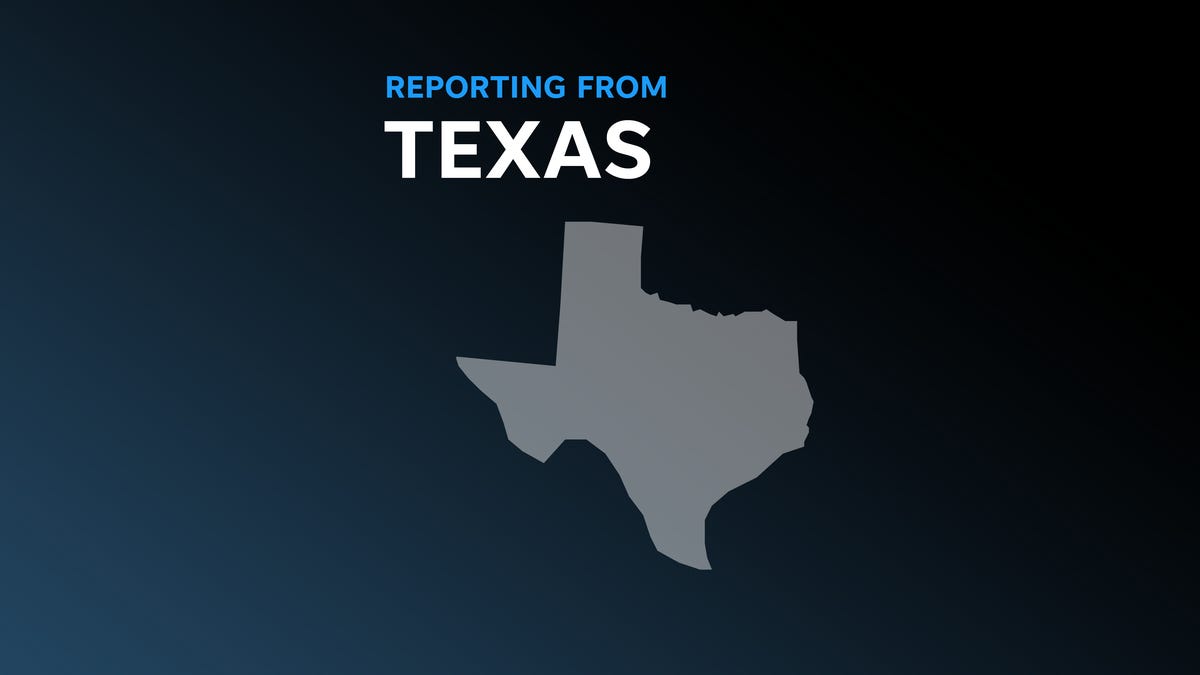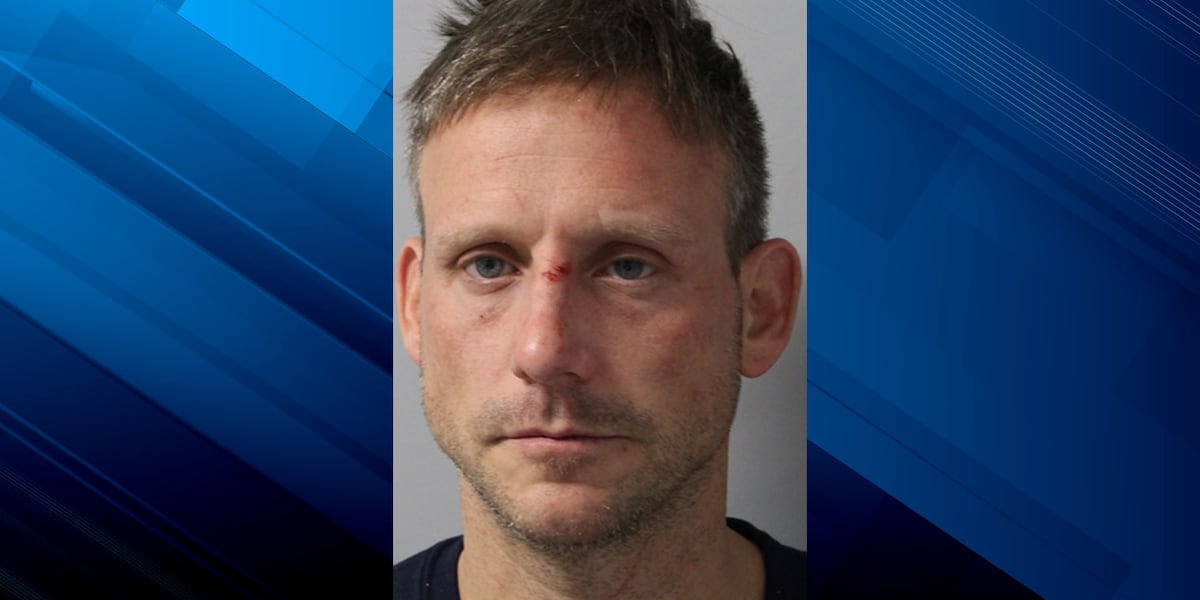It’s a misty autumn afternoon and along a winding country road in New Milford, a housing development emerges of stately though modestly-scaled homes with manageable lawns and pristine porches.
Connecticut
Sixteen people in CT were killed by an intimate partner in 2022. ‘It is a public health issue’

Each year in Connecticut, an average of 14 people are killed by an intimate partner.
Last year, 16 people were killed by their partners in Connecticut, and at least half of those homicides were witnessed by children at an average age of 6, according to the Connecticut Coalition Against Domestic Violence.
“As much as we have done to work on this issue we have a lot of work left to do,” said CCDAV president and CEO Meghan Scanlon on Monday, as advocates across the state kicked off Domestic Violence Awareness Month at the start of October.
“We owe it to [those children] to make sure that their entire life is not defined by this one moment that they had no control over.”
Domestic violence advocacy groups across Connecticut are focused not only on providing direct support to survivors who are in crisis, but on ramping up prevention work to help children who have been exposed to domestic violence at a young age and to teach children and teens how to spot red flags in relationships and where to turn when they arise.
Hartford Mayor Luke Bronin, who spoke at the State Capitol on Monday to help kick off the month of awareness, said that children who are exposed to domestic violence are much more likely to become victims or perpetrators of domestic violence themselves.
“We have to do everything we can as a community to try to break that cycle,” the mayor said.
One way to accomplish that goal, said Bronin, is to make sure that young people are learning “what they can and should demand and expect from healthy relationships.”
Through state and city partnerships with domestic violence prevention advocates, children and teens are also being taught to recognize the signs of an unhealthy relationship so that they can “raise the alarm when it needs to be raised,” said Bronin.
“There’s enormous power for our young people if they are able to recognize what healthy relationships and unhealthy relationships look like.”
The prevention work is part of what groups such as CCDAV and Interval House are highlighting in October, along with a declaration that domestic violence is not a family issue, or a behind-closed-doors problem, but a public health crisis.
“The real issue is that domestic violence is a public health issue,” said Mary-Jane Foster, president and CEO of Interval House, an organization founded in 1977 that is dedicated to ending domestic violence. “It’s not just a family matter, it’s not just a community matter, it’s not just a work violence issue, it is a public health issue.”
Foster said that according to guidelines from the Center for Disease Control and Prevention, intimate partner violence qualifies as a public health issue because it is widespread, has a significant impact and has the potential for long lasting ramifications, including lifelong physical and emotional impacts on survivors.
Interval House is Connecticut’s largest domestic violence agency, serving Hartford and surrounding 23 towns and cities. In 2022, 6,200 Connecticut residents were helped with domestic violence issues just in the Hartford region.
With its 18 member-organizations across the state, CCDAV served around 40,000 more people in 2022. Over 13,000 individuals reached out for help through their hotline.
According to the CDC, over 12 million people experience domestic violence or intimate partner abuse every year across the country.
Bronin on Monday said these numbers were “staggering.”
“Those are not statistics, those are lives, those are lives in our community, they’re families in our communities,” he said – people who are experiencing “fear and terror and pain” every day.
The month of October, he hopes, provides an opportunity for “talking openly and honestly and shining a bright light on this problem and what we’re doing about it, and more importantly, all that needs to be done.”
In Hartford on Monday, Interval House kicked off its annual “Purple With a Purpose” campaign – a nod to the awareness month’s signature color – to highlight the extent to which domestic violence impacts everyone living in Connecticut.
This year’s initiatives frame domestic violence as a public health crisis and focuses on the work being done to educate the public on the community-wide impacts of domestic violence, including the economic toll.
Intimate partner violence costs the United States more than $9 billion each year in direct care, law enforcement, and judicial services costs each year, Foster said.
According to a 2003 study by the National Center for Injury Prevention and Control at the CDC, the cost of intimate partner violence over an individual’s lifetime averages about $103,000 for women and $23,000 for men, including lost productivity from paid work, criminal justice costs, medical services and other expenses.
The Connecticut Paid Leave Authority on Monday reminded Connecticut residents that covered workers who meet eligibility requirements may receive up to 12 days of CT Paid Leave benefits if they are a victim of family violence.
That time can be used to address certain issues arising from the family violence, like receiving medical care or mental health care, time spent working with victim services organizations and time dedicated to relocating to safer environments or attending court proceedings as their case moves through the judicial system.
Eligible workers can use CT Paid Leave benefits to care for children who are experiencing serious health conditions, including mental or physical illnesses or injuries, that are connected to family violence.
An update to Connecticut’s paid sick days law that went into effect on October 1 allows eligible service workers to use 40 hours of accrued paid sick time to care for a child who has been a victim of family violence of sexual assault and to assist their child in receiving medical care, counseling or victim services. That time can also be used to accompany children to criminal or civil court proceedings or help with relocation.
Scanlon said these changes help make sure folks across Connecticut who are victims of family violence have access to support they need.
“The change to Connecticut’s paid sick days law is important to ensure that everyone has equitable access to support regardless of the industry in which they work. We know that domestic violence is a public health crisis,” said Scanlon.
Erin Choquette, CEO of CT Paid Leave, said “the CT Paid Leave Act and the paid sick days statutes continue to work in tandem to provide needed benefits for those struggling with family violence so they can get the support and care they need.”
To apply for paid leave online, workers can visit www.ctpaidleave.org.
For 24/7 free, confidential support through CCDAV, visit www.ctcadv.org or www.ctsafeconnect.com or call or text (888) 774-2900.
Interval House’s hotline can be reached by calling 860-838-8467.
Confidential, free support groups provided by certified domestic violence counselors are also available through Interval House, with childcare provided at all sessions, on Tuesdays from 6 to 7:30 p.m. in Hartford and Wednesdays from 6 to 7:30 p.m. in Manchester.
Interval House has several upcoming events, including the Jennifer Farber Dulos Memorial Walk to End Domestic Violence being held at Dunkin’ Park in Hartford at 9 a.m. Oct 7 to honor victims and survivors, and the Breakfast with Champions annual breakfast on Oct. 25 that celebrates partnerships with healthcare providers who connect victims of domestic violence to Interval House.

Connecticut
Pedestrian Killed In Crash On Christmas Eve: Police: CT News

Patch PM CT brings you breaking and trending news stories from all across Connecticut each weeknight. Here are the top stories from across the entire state:
A pedestrian was killed after being struck by one vehicle, and police are looking for a hit-and-run driver who injured another over Christmas in the same town.>>>Read More.
Police said the shooting, which happened early Christmas morning, shut down the highway for several hours.>>>Read More.
A man is accused of stealing an acquaintance’s dog then killing it and dismembering its body, according to police.>>>Read More.
A man was shot and killed after an argument on Christmas Eve, according to police.>>>Read More.
Residents really have an excuse now to flick, er, pick the town manager’s brain.>>>Read More.
Whether you’re looking to let off some steam, or quietly reflect how you made it this far, CT has you covered this weekend.>>>Read More.
Other top stories:
The Patch community platform serves communities all across Connecticut. Thank you for reading.
Connecticut
Zero fatal car crashes during Christmas in Connecticut: state police

New preliminary statistics from Connecticut State Police were released on Thursday. According to troopers, they responded to zero fatal crashes during their patrols on Christmas Eve and Christmas Day.
The new stats include responses from the start of Dec. 23 through the end of Dec. 25.
State police say they had more than 1,600 calls for service, including 168 traffic stops, 15 DUI stops, and 150 motor vehicle crashes.
State police sat 14 of those crashes had reported injuries, though none were listed as ‘serious’ and none led to death.
During the Thanksgiving holiday week, 1 fatal crash was reported by CT state police.
In total, this year’s number of traffic-related deaths is on pace for near record-high numbers.
Connecticut
Tony-award winning director Jack O'Brien talks about career, life in CT

Jack O’Brien, a Tony-winning director is photographed in his New Milford home, Oct. 29, 2024.
Carol Kaliff/For Hearst Connecticut MediaIn one of the dozen or so homes in this quiet mini-village is where theater director Jack O’Brien has lived for the past 10 years.
“I call the style of home ‘Early Ozzie and Harriet,’ ” he said laughing, as he greets his visitors.
Article continues below this ad

Jack O’Brien, a Tony-winning director has an extensive collection of framed posters from the many productions he was part of.
Carol Kaliff/For Hearst Connecticut MediaLike the avuncular man himself, the two-story house reflects a sense of the classic, the playful and the practical.

Jack O’Brien, a Tony-winning director is photographed in his New Milford home holding the Tony he received for lifetime achievement, Oct. 29, 2024.
Carol Kaliff/For Hearst Connecticut MediaOver a six-decade career in the theater and nearly 50 Broadway credits, O’Brien has earned three Tony Awards and in June received another for lifetime achievement.
Article continues below this ad
At 85, he’s still achieving plenty.
This fall on Broadway he directed close chums Patti LuPone and Mia Farrow — who live nearby — in the Jen Silverman comedy “The Roommate.” He also launched the national tour of the 2023 Broadway musical “Shucked,” which earned him his seventh nomination. He is readying to cast the musical for its London premiere and for 2025 he will be working on a Broadway-bound revival of “The Sound of Music.”

Jack O’Brien, a Tony-winning director is photographed in his New Milford home, Oct. 29, 2024.
Carol Kaliff/For Hearst Connecticut Media“Let’s go upstairs,” O’Brien eagerly said, leading his guests to a large alcove whose walls are covered with production photos, design sketches and posters of some of the hits (and misses) of his career. To comfortably take it all in there’s a butterscotch-colored leather couch, accented with a colorful variety of textured pillows.
Article continues below this ad
“Isn’t this fun?,” he said taking a seat, clearly pleased in showing off the room to a theater aficionado. “And this isn’t even everything!”
It’s a theater archivist’s dreamscape: memorabilia that goes back to the start of his career with the APA Phoenix Repertory Company in the ‘60s; the launch of his Broadway career — in the ‘70s with an acclaimed production of “Porgy and Bess;” his years as artistic director of San Diego’s Old Globe and its Broadway transfers in the ‘80s and ‘90s; a string of hit musicals and collaborations with Tom Stoppard in the 2000s; more awards and nominations in the 2010s; and his latest nomination in the 2023 for “Shucked.”

Jack O’Brien, a Tony-winning director, has an extensive collection of framed posters from the many productions he was part of in his New Milford home.
Carol Kaliff/For Hearst Connecticut MediaFor each piece of the past, there’s inevitably a backstage tale and O’Brien is known to be one of the best theater storytellers in the business, the person you most want to sit next to at dinner. He has authored two anecdote-filled memoirs, the last being “Jack in the Box or, How to Goddamn Direct.”
Article continues below this ad
The airy second floor is for overnight guests and those who might enjoy looking at his theater collection, he said. For himself, well, O’Brien is just too busy to overindulge in nostalgia, residing on the ground floor.
“I have no rear-view mirror,” said the upbeat director. “I only look forward.”
Connecticut escape
Connecticut — and specifically Litchfield Country — has been O’Brien’s refuge from the demands and chaos of Manhattan for nearly 25 years, initially wooed by theater pals who lived here.
Article continues below this ad

Jack O’Brien, a Tony-winning director is photographed in his New Milford home, Oct. 29, 2024.
Carol Kaliff/For Hearst Connecticut Media“Lindsay Law, who produced all my television shows (for PBS’ “American Playhouse” in the ‘70s) lived in Roxbury and I would come up to visit every weekend,” he said.
Following the death of his partner, composer James J. Legg Jr., in 2000, O’Brien decided to create new memories in the serene corner of Connecticut. He bought a sprawling homestead which he named “Imaginary Farms,” after the 2002 Broadway play he was directing at the time, “Imaginary Friends.”
”It was the house that ‘Hairspray’ built,” he said, referring to his 2002 hit musical.
Article continues below this ad

Tony Awards, won by director Jack O’Brien , are photographed in his New Milford home, Oct. 29, 2024.
Carol Kaliff/For Hearst Connecticut Media“It was gorgeous,” he said of that first home, noting its swimming pool, guest house and 20 acres. “We always had loads of friends there. I traditionally cooked Thanksgiving or Christmas for (composer Stephen) Sondheim and all our friends.”
“But several years ago my financial advisor said to me, ‘You can’t keep this house because it takes three staffs of people to run it.’ So I said OK, and I made a video of the place and sent it to all my theater people, most of whom had been guests there at one time or another.’
Ethan Hawke, whom O’Brien directed in Stoppard’s “The Coast of Utopia” trilogy and Shakespeare’s “Henry IV” and “Macbeth,” bought the house “And everything in. He said, ‘We want to live like you live.’ I feel so wonderful about how it all turned out.”
Article continues below this ad

Jack O’Brien, a Tony-winning director is photographed in his New Milford home, Oct. 29, 2024.
Carol Kaliff/For Hearst Connecticut MediaAfter selling his apartment on Central Park West 10 years ago, he sought a return to Connecticut. He learned that a new development was being built in New Milford, and that he could customize a home to his tastes, which one might call a slightly different kind of directing.
“The entire development looks like the back lot of MGM in 1945,” he said. “And by that I mean quite charming. It’s perfect for me now.”
Long runs for directors
O’Brien leads his guests to his ground-floor bedroom where on display are shelves of his multiple awards — including his Tonys, an armful of Drama Desk trophies, and the Theatre Hall of Fame honor. On the floor there’s a throw rug created by stage designer David Rockwell completely made up of colorful satin bow ties.
Article continues below this ad
In the living room, he eases into an oversized, wing-chair next to a marble fireplace, as Coda, as if on cue, jumps into his lap.
“I’ve had four Yorkies in my lifetime and Coda (is) the last of a distinguished line,” he said, seemingly a nod to his own age more than his dog’s.

Jack O’Brien, a Tony-winning director is photographed in his New Milford home with Coda, a female Norwich Terrier, Oct. 29, 2024.
Carol Kaliff/For Hearst Connecticut MediaIt is pointed out to him that legendary theater director George Abbott lived to be 107 and continued working until his death in 1995.
Article continues below this ad
“I met him when he was 105,” he said, referring to the time O’Brien directed a revival of “Damn Yankees” starring Jerry Lewis. Abbott was protective of his original script which O’Brien sought to rewrite. “Those extra two angry years kept him alive,” he said.
“I guess there’s something about theater directors. Twenty years ago, I didn’t know anyone in their 90s. Now I know a lot and many of them are still working. I’m working all the time now, too. It’s ridiculous. I thought it was going to stop — but it didn’t.”
-
/cdn.vox-cdn.com/uploads/chorus_asset/file/24924653/236780_Google_AntiTrust_Trial_Custom_Art_CVirginia__0003_1.png)
/cdn.vox-cdn.com/uploads/chorus_asset/file/24924653/236780_Google_AntiTrust_Trial_Custom_Art_CVirginia__0003_1.png) Technology6 days ago
Technology6 days agoGoogle’s counteroffer to the government trying to break it up is unbundling Android apps
-

 News7 days ago
News7 days agoNovo Nordisk shares tumble as weight-loss drug trial data disappoints
-

 Politics7 days ago
Politics7 days agoIllegal immigrant sexually abused child in the U.S. after being removed from the country five times
-

 Entertainment1 week ago
Entertainment1 week ago'It's a little holiday gift': Inside the Weeknd's free Santa Monica show for his biggest fans
-

 Lifestyle7 days ago
Lifestyle7 days agoThink you can't dance? Get up and try these tips in our comic. We dare you!
-
/cdn.vox-cdn.com/uploads/chorus_asset/file/25672934/Metaphor_Key_Art_Horizontal.png)
/cdn.vox-cdn.com/uploads/chorus_asset/file/25672934/Metaphor_Key_Art_Horizontal.png) Technology2 days ago
Technology2 days agoThere’s a reason Metaphor: ReFantanzio’s battle music sounds as cool as it does
-

 Technology1 week ago
Technology1 week agoFox News AI Newsletter: OpenAI responds to Elon Musk's lawsuit
-

 News3 days ago
News3 days agoFrance’s new premier selects Eric Lombard as finance minister

























